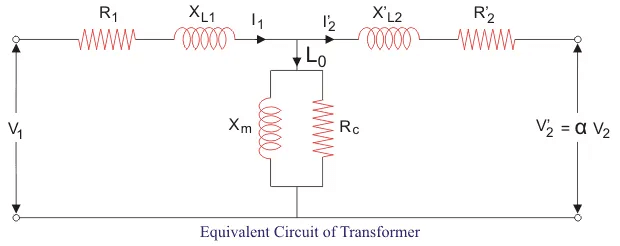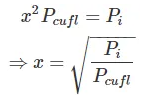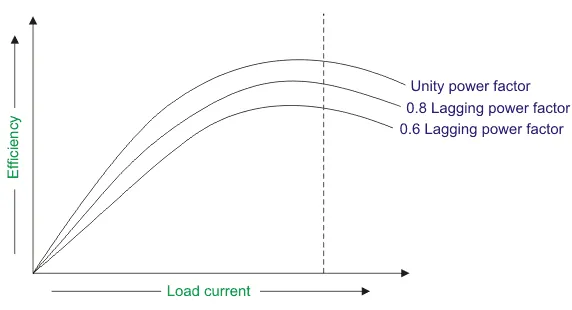The Efficiency of transformer is introduced as the ratio of beneficial output power to the input one. The input and output power are detected in the same unit. Its unit is either in KW or Watts (W). The efficiency of transformer is expressed by η.
Efficiency (η) = (Power Output/Power Input)
In general, efficiency can be expressed with ‘η’. The above equation is practical for a perfect transformer wherever there will be no transformer wastes as well as the full energy within the input gets moved to the output.
As a result, if transformer wastes are considered and if the efficiency of transformer is analyzed across the practical states, the next equation is mainly used.
Efficiency = ((Power O/P) / (Power O/P + Copper Losses + Core Losses)) × 100%
Or else it can be expressed as
Efficiency = (Power i/p – Losses) / Power i/p × 100 = 1− (Losses/i/p Power) × 100
So, all the input, o/p, and wastes are typically expressed in terms of power (Watts).
Transformers create the most important connection between the load and supply systems. The efficiency of transformer directly influences its operation and aging. The transformer’s efficiency is generally in the range of 95 – 99 %. The efficiency can be as high as 99.7% for great power transformers with very low wastes. The output and input measurements of a transformer are not implemented under loaded conditions as the wattmeter sensing inevitably suffers errors of 1 – 2%.
The equivalent circuit of the device referred to the primary section is presented below. Here Rc is used for core wastes. By employing Short Circuit (SC) test, we can find the identical resistance accounting for copper wastes as
Re=R1+R2′
where
R2′=a2R2

Let us purpose x as the percentage of full or rated load ‘S’ (VA), Pcufl(watts) as the complete load copper waste, and cos(θ) as the power coefficient of the load. We can also define Pi (watts) as the core waste. As copper and iron wastes are the main losses in the transformer hence only these two forms of losses are considered while measuring efficiency. Then the efficiency of transformer can be formulated as:

Where x2Pcufl is the copper loss (Pcu) at any loading x percent of a complete load.
The maximum efficiency (ηmax) can be achieved when the variable wastes are identical to the constant losses. Because the copper waste is load dependent, hence it is a variable quantity. And the core waste is taken to be the fixed quantity. Therefore, the condition for maximum efficiency is:

Now we can obtain the maximum efficiency as:

We can achieve maximum efficiency at full load by properly selecting variable and constant waste, although achieving maximum efficiency is problematic because copper waste has a much greater loss than fixed core.
The variation of efficiency with loading is shown in the figure below:

All-day efficiency of transformer
Unlike power transformers, distribution equipment loads change 24 hours a day. Since core waste is load independent, all-day efficiency is based on copper waste. We refer to it as the level of transfer of output power to input power over a 24-hour period. High power efficiency is achieved by using a relatively large cr and limiting the core flux density to a low amount (since core waste depends on flux density)
There are several methods to improve the efficiency of transformer including insulation, loop area, flux coupling, and coils resistance.